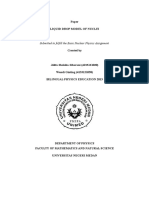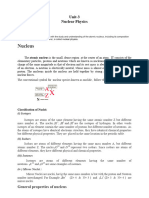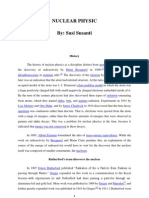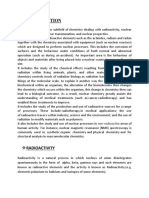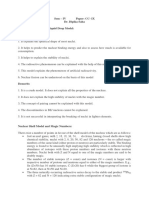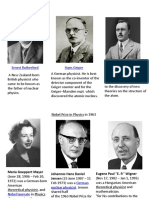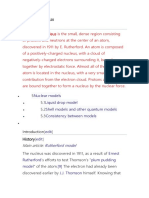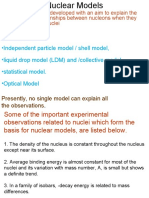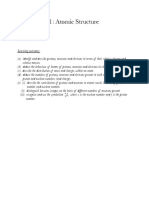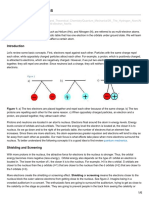0% found this document useful (0 votes)
13 views13 pagesPHS 214 Week 2 Lecture
The document outlines various nuclear models, including the Liquid Drop Model, Shell Model, and Meson Theory of Nuclear Force, which describe the structure and behavior of atomic nuclei. The Liquid Drop Model likens nucleons to molecules in a liquid, while the Shell Model explains the stability of certain nuclei based on energy levels and magic numbers. The Meson Theory, proposed by Hideki Yukawa, suggests that nuclear forces arise from the exchange of mesons, contributing to the field of particle physics.
Uploaded by
maianadexoluCopyright
© © All Rights Reserved
We take content rights seriously. If you suspect this is your content, claim it here.
Available Formats
Download as PDF, TXT or read online on Scribd
0% found this document useful (0 votes)
13 views13 pagesPHS 214 Week 2 Lecture
The document outlines various nuclear models, including the Liquid Drop Model, Shell Model, and Meson Theory of Nuclear Force, which describe the structure and behavior of atomic nuclei. The Liquid Drop Model likens nucleons to molecules in a liquid, while the Shell Model explains the stability of certain nuclei based on energy levels and magic numbers. The Meson Theory, proposed by Hideki Yukawa, suggests that nuclear forces arise from the exchange of mesons, contributing to the field of particle physics.
Uploaded by
maianadexoluCopyright
© © All Rights Reserved
We take content rights seriously. If you suspect this is your content, claim it here.
Available Formats
Download as PDF, TXT or read online on Scribd
/ 13














